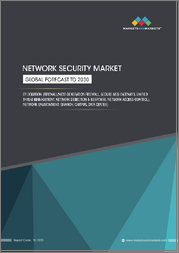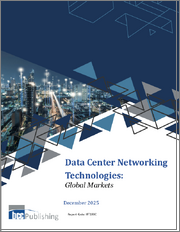
|
시장보고서
상품코드
1687617
데이터센터 시장 규모, 점유율, 성장 분석 : 컴포넌트별, 데이터센터 유형별, 기업 규모별, Tier 레벨별, 데이터센터 규모별, 업계별, 지역별 - 산업 예측(2025-2032년)Data Center Market Size, Share, and Growth Analysis, By Component (Hardware, Services), By Data Center Type (Colocation, Hyperscale), By Enterprise Size, By Tier Level, By Data Center Size, By Industry, By Region - Industry Forecast 2025-2032 |
||||||
데이터센터 시장 규모는 2023년에 3,645억 달러에 달하며, 2024년 3,954억 8,000만 달러에서 2032년에는 7,595억 7,000만 달러로 성장하며, 예측 기간 중(2025-2032년) CAGR은 8.5%로 성장할 전망입니다.
5G 네트워크의 급격한 증가로 인해 사용자들은 더 빠른 다운로드, 원활한 스트리밍, 온라인 서비스에 대한 더 나은 액세스를 원하고 있으며, 데이터센터 인프라에 대한 수요는 그 어느 때보다 높아지고 있습니다. 이러한 기술 발전으로 인해 증가하는 데이터 트래픽을 처리할 수 있는 견고한 데이터센터가 필요하며, 특히 엣지 컴퓨팅 솔루션으로 전환하는 클라우드 프로바이더에 있어서는 더욱 중요해졌습니다. 마이크로 데이터센터는 산업 자동화, 자율주행차 등 시간에 민감한 용도의 대기 시간 단축과 같은 중요한 이점을 제공하므로 특히 중소기업과 대기업 사이에서 인기를 끌고 있습니다. 또한 휴대용, 소형, 모듈화된 데이터센터의 인기가 높아지면서 마이크로 데이터센터의 매력은 더욱 커지고 있습니다. 이러한 시설은 쉽게 배치할 수 있고 특정 요구에 맞게 조정할 수 있으므로 진화하는 환경에서 중요한 역할을 하고 있습니다.
목차
서론
- 조사의 목적
- 조사 범위
- 정의
조사 방법
- 정보 조달
- 2차와 1차 데이터 방법
- 시장 규모 예측
- 시장의 전제조건과 제한
개요
- 세계 시장 전망
- 공급과 수요 동향 분석
- 부문별 기회 분석
시장 역학과 전망
- 시장 개요
- 시장 규모
- 시장 역학
- 촉진요인과 기회
- 억제요인과 과제
- Porter의 산업 분석
주요 시장 인사이트
- 주요 성공 요인
- 경쟁의 정도
- 주요 투자 기회
- 시장 에코시스템
- 시장의 매력 지수(2024년)
- PESTEL 분석
- 거시경제 지표
- 밸류체인 분석
- 가격 분석
- 기술의 진보
- 사례 연구
데이터센터 시장 규모 : 컴포넌트별 & CAGR(2025-2032)
- 시장 개요
- 하드웨어
- 전력 시스템
- 냉각 시스템
- 서버
- 네트워크 디바이스
- 기타
- 랙
- DCIM(데이터센터 인프라 관리) 소프트웨어
- 온프레미스
- 클라우드
- 서비스
데이터센터 시장 규모 : 데이터센터 유형별 & CAGR(2025-2032)
- 시장 개요
- 코로케이션
- 하이퍼스케일
- 엣지
- 기타
- 관리
- 모듈러
데이터센터 시장 규모 : 기업 규모별 & CAGR(2025-2032)
- 시장 개요
- 중소기업
- 대기업
데이터센터 시장 규모 : Tier 레벨별 & CAGR(2025-2032)
- 시장 개요
- Tier 1 및 Tier 2
- Tier 3
- Tier 4
데이터센터 시장 규모 : 데이터센터 규모별 & CAGR(2025-2032)
- 시장 개요
- 소
- 중
- 대
데이터센터 시장 규모 : 업계별 & CAGR(2025-2032)
- 시장 개요
- BFSI
- IT 및 통신
- 헬스케어
- 정부
- 제조업
- 소매·E-Commerce
- 기타
- 미디어와 엔터테인먼트
데이터센터 시장 규모 : 지역별 & CAGR(2025-2032)
- 북미
- 미국
- 캐나다
- 유럽
- 독일
- 스페인
- 프랑스
- 영국
- 이탈리아
- 기타 유럽 지역
- 아시아태평양
- 중국
- 인도
- 일본
- 한국
- 기타 아시아태평양
- 라틴아메리카
- 브라질
- 기타 라틴아메리카 지역
- 중동 및 아프리카
- GCC 국가
- 남아프리카공화국
- 기타 중동 및 아프리카
경쟁 정보
- 상위 5사의 비교
- 주요 기업의 시장 포지셔닝(2024년)
- 주요 시장 기업이 채택한 전략
- 최근 시장 동향
- 기업의 시장 점유율 분석(2024년)
- 주요 기업의 기업 개요
- 기업의 상세
- 제품 포트폴리오 분석
- 기업의 부문별 점유율 분석
- 매출의 전년대비 비교(2022-2024)
주요 기업 개요
- Amazon Web Services(AWS)(USA)
- Microsoft Azure(USA)
- Google Cloud Platform(GCP)(USA)
- Equinix(USA)
- Digital Realty(USA)
- NTT Global Data Centers(Japan)
- Alibaba Cloud(China)
- Oracle Cloud(USA)
- IBM Cloud(USA)
- Tencent Cloud(China)
- OVHcloud(France)
- Iron Mountain Data Centers(USA)
- Cyxtera Technologies(USA)
- CoreSite(USA)
- QTS Data Centers(USA)
- CloudHQ(USA)
- KDDI(Japan)
- Fujitsu(Japan)
- H5 Data Centers(USA)
결론과 제안
KSA 25.04.24Data Center Market size was valued at USD 364.5 billion in 2023 and is poised to grow from USD 395.48 billion in 2024 to USD 759.57 billion by 2032, growing at a CAGR of 8.5% during the forecast period (2025-2032).
The surge in 5G networks is driving unprecedented demand for data center infrastructure as users seek faster downloads, seamless streaming, and enhanced access to online services. This technological advancement necessitates robust data centers to accommodate the resulting increase in data traffic, particularly for cloud providers moving towards edge computing solutions. Micro data centers are gaining traction, especially among SMEs and large enterprises, as they offer crucial advantages like reduced latency for time-sensitive applications in industrial automation and autonomous vehicles. Additionally, the rising popularity of portable, compact, modularized data centers enhances the appeal of micro data centers. These facilities are easily deployable and adaptable to specific needs, positioning them as a key player in the evolving data center landscape.
Top-down and bottom-up approaches were used to estimate and validate the size of the Data Center market and to estimate the size of various other dependent submarkets. The research methodology used to estimate the market size includes the following details: The key players in the market were identified through secondary research, and their market shares in the respective regions were determined through primary and secondary research. This entire procedure includes the study of the annual and financial reports of the top market players and extensive interviews for key insights from industry leaders such as CEOs, VPs, directors, and marketing executives. All percentage shares split, and breakdowns were determined using secondary sources and verified through Primary sources. All possible parameters that affect the markets covered in this research study have been accounted for, viewed in extensive detail, verified through primary research, and analyzed to get the final quantitative and qualitative data.
Data Center Market Segments Analysis
Global Data Center Market is segmented by Component, Data Center Type, Enterprise Size, Tier Level, Data Center Size, Industry and region. Based on Component, the market is segmented into Hardware, DCIM (Data Center Infrastructure Management) Software and Services. Based on Data Center Type, the market is segmented into Colocation, Hyperscale, Edge and Others. Based on Enterprise Size, the market is segmented into SMEs and Large Enterprises. Based on Tier Level, the market is segmented into Tier 1 and Tier 2, Tier 3 and Tier 4. Based on Data Center Size, the market is segmented into Small, Medium and Large. Based on Industry, the market is segmented into BFSI, IT & Telecom, Healthcare, Government, Manufacturing, Retail & E-commerce and Others. Based on region, the market is segmented into North America, Europe, Asia Pacific, Latin America and Middle East & Africa.
Driver of the Data Center Market
The Data Center market is primarily driven by the surging need for data storage and processing capabilities, fueled by the rise of cloud computing, big data analytics, and ongoing digital transformation initiatives. As businesses and projects continuously generate and utilize vast quantities of data, there is an escalating demand for robust data processing infrastructure. This necessitates the establishment of multiple data centers to accommodate the central processing capacity required for managing this extensive data flow. Consequently, the imperatives for efficient data management and operational scalability are propelling investments and advancements within the data center sector, marking a significant trend in the current technological landscape.
Restraints in the Data Center Market
The data center market faces several restraints, primarily due to the significant expenses involved in their operation. These costs encompass energy consumption, cooling systems, and ongoing maintenance, which can be particularly burdensome for small businesses and startups operating on constrained budgets. Such financial challenges can hinder their ability to invest in the latest infrastructure or technologies, ultimately limiting their competitiveness in a rapidly evolving digital landscape. Consequently, these high operating costs can serve as a substantial barrier to entry and growth within the data center sector, impacting innovation and development opportunities for smaller enterprises.
Market Trends of the Data Center Market
As of October 2023, the data center market is witnessing a significant shift driven by the rise of edge computing. This paradigm shift is compelling organizations to innovate data center strategies as the demand for faster data processing and reduced latency escalates. By decentralizing data processing and positioning smaller distributed data centers closer to data generation sources, companies can enhance efficiency and enable real-time analytics. This trend not only complements existing traditional data centers but also opens new avenues for infrastructure expansion, promoting scalability and resilience in the face of evolving technological demands. Consequently, edge computing is set to reshape the overall data center landscape.
Table of Contents
Introduction
- Objectives of the Study
- Scope of the Report
- Definitions
Research Methodology
- Information Procurement
- Secondary & Primary Data Methods
- Market Size Estimation
- Market Assumptions & Limitations
Executive Summary
- Global Market Outlook
- Supply & Demand Trend Analysis
- Segmental Opportunity Analysis
Market Dynamics & Outlook
- Market Overview
- Market Size
- Market Dynamics
- Drivers & Opportunities
- Restraints & Challenges
- Porters Analysis
- Competitive rivalry
- Threat of substitute
- Bargaining power of buyers
- Threat of new entrants
- Bargaining power of suppliers
Key Market Insights
- Key Success Factors
- Degree of Competition
- Top Investment Pockets
- Market Ecosystem
- Market Attractiveness Index, 2024
- PESTEL Analysis
- Macro-Economic Indicators
- Value Chain Analysis
- Pricing Analysis
- Technological Advancement
- Case Studies
Global Data Center Market Size by Component & CAGR (2025-2032)
- Market Overview
- Hardware
- Power Systems
- Cooling Systems
- Servers
- Networking Devices
- Others
- Racks
- DCIM (Data Center Infrastructure Management) Software
- On-premises
- Cloud
- Services
Global Data Center Market Size by Data Center Type & CAGR (2025-2032)
- Market Overview
- Colocation
- Hyperscale
- Edge
- Others
- Managed
- Modular
Global Data Center Market Size by Enterprise Size & CAGR (2025-2032)
- Market Overview
- SMEs
- Large Enterprises
Global Data Center Market Size by Tier Level & CAGR (2025-2032)
- Market Overview
- Tier 1 and Tier 2
- Tier 3
- Tier 4
Global Data Center Market Size by Data Center Size & CAGR (2025-2032)
- Market Overview
- Small
- Medium
- Large
Global Data Center Market Size by Industry & CAGR (2025-2032)
- Market Overview
- BFSI
- IT & Telecom
- Healthcare
- Government
- Manufacturing
- Retail & E-commerce
- Others
- Media & Entertainment
Global Data Center Market Size & CAGR (2025-2032)
- North America (Component, Data Center Type, Enterprise Size, Tier Level, Data Center Size, Industry)
- US
- Canada
- Europe (Component, Data Center Type, Enterprise Size, Tier Level, Data Center Size, Industry)
- Germany
- Spain
- France
- UK
- Italy
- Rest of Europe
- Asia Pacific (Component, Data Center Type, Enterprise Size, Tier Level, Data Center Size, Industry)
- China
- India
- Japan
- South Korea
- Rest of Asia-Pacific
- Latin America (Component, Data Center Type, Enterprise Size, Tier Level, Data Center Size, Industry)
- Brazil
- Rest of Latin America
- Middle East & Africa (Component, Data Center Type, Enterprise Size, Tier Level, Data Center Size, Industry)
- GCC Countries
- South Africa
- Rest of Middle East & Africa
Competitive Intelligence
- Top 5 Player Comparison
- Market Positioning of Key Players, 2024
- Strategies Adopted by Key Market Players
- Recent Developments in the Market
- Company Market Share Analysis, 2024
- Company Profiles of All Key Players
- Company Details
- Product Portfolio Analysis
- Company's Segmental Share Analysis
- Revenue Y-O-Y Comparison (2022-2024)
Key Company Profiles
- Amazon Web Services (AWS) (USA)
- Company Overview
- Business Segment Overview
- Financial Updates
- Key Developments
- Microsoft Azure (USA)
- Company Overview
- Business Segment Overview
- Financial Updates
- Key Developments
- Google Cloud Platform (GCP) (USA)
- Company Overview
- Business Segment Overview
- Financial Updates
- Key Developments
- Equinix (USA)
- Company Overview
- Business Segment Overview
- Financial Updates
- Key Developments
- Digital Realty (USA)
- Company Overview
- Business Segment Overview
- Financial Updates
- Key Developments
- NTT Global Data Centers (Japan)
- Company Overview
- Business Segment Overview
- Financial Updates
- Key Developments
- Alibaba Cloud (China)
- Company Overview
- Business Segment Overview
- Financial Updates
- Key Developments
- Oracle Cloud (USA)
- Company Overview
- Business Segment Overview
- Financial Updates
- Key Developments
- IBM Cloud (USA)
- Company Overview
- Business Segment Overview
- Financial Updates
- Key Developments
- Tencent Cloud (China)
- Company Overview
- Business Segment Overview
- Financial Updates
- Key Developments
- OVHcloud (France)
- Company Overview
- Business Segment Overview
- Financial Updates
- Key Developments
- Iron Mountain Data Centers (USA)
- Company Overview
- Business Segment Overview
- Financial Updates
- Key Developments
- Cyxtera Technologies (USA)
- Company Overview
- Business Segment Overview
- Financial Updates
- Key Developments
- CoreSite (USA)
- Company Overview
- Business Segment Overview
- Financial Updates
- Key Developments
- QTS Data Centers (USA)
- Company Overview
- Business Segment Overview
- Financial Updates
- Key Developments
- CloudHQ (USA)
- Company Overview
- Business Segment Overview
- Financial Updates
- Key Developments
- KDDI (Japan)
- Company Overview
- Business Segment Overview
- Financial Updates
- Key Developments
- Fujitsu (Japan)
- Company Overview
- Business Segment Overview
- Financial Updates
- Key Developments
- H5 Data Centers (USA)
- Company Overview
- Business Segment Overview
- Financial Updates
- Key Developments



















